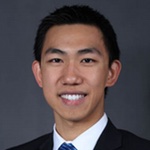
Haihao Liu
Rice University
Sophomore, Materials Science & NanoEngineering and Mathematics
Expected Graduation: May 2018
Host Lab in Japan: Saito Lab, Tohoku University
Research Project Abstract and Poster: Hidden Symmetries in One-Dimensional Photonic Crystals ![]()
Undergraduate Poster Presentation Award: Altos Photonics – Light Conversion USA Award
Why Nakatani RIES?
I have always been fascinated by and had a love for Japan. From the very first time I heard about NanoJapan, the predecessor to the Nakatani RIES Fellowship, I knew it was perfect for me. Of course, the primary focus is research, but such a huge part of the program is about immersing yourself in Japanese culture. Nakatani RIES also fits perfectly into my undergraduate academic goals. My recent studies and research have led me to become especially interested in materials with unconventional quantum properties. Furthermore, my main motivation in pursuing an additional Math degree is because it complements my interest in the theoretical side of this cutting-edge physics. This is why I’m most looking forward to working with Prof. Saito, as I will have the opportunity to see what doing research in theory is like.
I feel that my experiences living in various parts of the world (China, US, Hong Kong) have given me some unique perspectives. Our most pressing challenges today, including energy, climate, and poverty, are so complex and on such a large, global scale that different backgrounds and perspectives are required of scientists and engineers working together in the coming decades. Thus, it is from personal experience that I sincerely believe it is so important and valuable for all students, not just STEM majors, to try and take the opportunity to study abroad and participate in international research experiences, such as Nakatani RIES.
Goals for the Summer
- To solidify and augment my understanding of physics, especially electromagnetism and quantum mechanics, and to be able to apply that knowledge in research
- To learn some of the advanced mathematics and modeling methods used in theoretical physics
- To improve my reading skills and attain at least a conversational level of proficiency in Japanese
- To become more responsible, independent, and self-sufficient by living in a foreign country for three months
- To gain a deeper understanding of and appreciation for Japanese culture
Excerpts from Haihao’s Weekly Reports
- Week 01: Arrival in Japan
- Week 02: Trip to Akita
- Week 03: Noticing Similarities, Noticing Differences
- Week 04: First Week at Research Lab
- Week 05: Critical Incident Analysis – Life in Japan
- Week 06: Preparation for Mid-Program Meeting
- Week 07: Overview of Mid-Program Meeting & Research Host Lab Visit
- Week 08: Research in Japan vs. Research in the U.S.
- Week 09: Reflections on Japanese Language Learning
- Week 10: Interview with a Japanese Researcher
- Week 11: Critical Incident Analysis – In the Lab
- Week 12: Final Week at Research Lab
- Week 13: Final Report
Week 01: Arrival in Japan
Japan was everything I expected it to be and so much more. It is a highly developed country, and this was evident from the moment we stepped off the plane. Narita Airport was very big and modern, with many forms of public transportation connecting it to the city (including three different train lines!). The weather was absolutely gorgeous the day we arrived: the temperature was perfect, nice and cool, with a slight breeze. As we approached the megalopolis that is Tokyo, my excitement mounted in anticipation of getting to explore and seeing what it has to offer over the next three weeks.
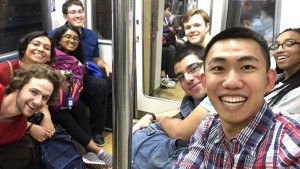
Tokyo is in many ways like Hong Kong, where I lived for seven years before college and where my family lives now. Shinjuku and Akihabara were both very similar to and reminded me of the many busy districts of Hong Kong, and kind of made me a little homesick or perhaps even nostalgic. This is pretty much what I expected, since they are both big modern metropolises, but they are particularly alike in the convenience and ubiquity of public transportation, which I’m very used to but unfortunately don’t have in Houston. Tokyo’s subway and train system is actually far denser than even Hong Kong’s. This all contributes to how I consider Japan to be a very efficient society as a whole. The idea of efficiency permeates everywhere, and “explains” the ordering machines in some restaurants, the tray collection belt at Todai’s cafeteria, automatic change makers, etc. etc., all of which I’d never seen before. It’s also related of course, to the vending machine culture. Another facet of this efficiency is how so many workers buy lunch from konbini (convenient stores). I’m not sure if I expected this or not, it’s just something I don’t think I was quite aware of. They are of course very convenient, similar to ones in Hong Kong (especially in their frequency), and much more so than those in the US.
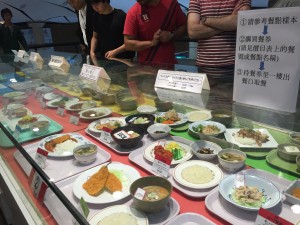
From what I’ve been told about Japan since I was young, I expected Japanese people to be very polite, and this was definitely the case, for example, frequently making small bows as they speak. However, in that respect, one thing that was very unexpected for me was that people don’t generally give up their seats on trains, not even to the elderly. This, I suppose, can be traced back to the concept of filial piety and respect for elders that is an integral part of Chinese culture, and is deeply engrained within my conception of politeness, which is why giving up our seats is good manner. These ideas are not as dominant in Japanese culture, I would surmise. The number of smokers and smoking indoors was definitely not expected, as it’s never done in Hong Kong and China has been cracking down on it in recent years. The food did definitely live up to my expectations though. I guess it’s not even Japanese food specifically, just great Asian food in general. I used to have Japanese food (e.g. Yoshinoya, CoCo Ichibanya) quite regularly in Hong Kong, so everything was very familiar. But just something as simple as having good rice almost every meal, instead of maybe once a week like at Rice, is much more what I’m used to, since I love rice, and in a way comforting, as if I’m home again.
Japanese language classes have been going well I feel. I was placed into the fourth (top) group, along with Rony and Daniel. However, it is apparent that I have very different strengths and weaknesses from either of them. They have both taken Japanese much more recently, in university, whereas the last time I took Japanese was in middle school. Therefore, I never learned many of the grammatical constructions with conjugating verbs and adjectives that they know, and also just know considerably less vocabulary I feel. The teachers have been very patiently explaining these grammar points to me, also as review for them, but I have to study myself to catch up. On the other hand, I have an obvious and definite advantage in knowing Chinese (especially the traditional characters used in Hong Kong), as it allows me to read almost all kanji that we come across. I have been making the most of this, both in class and out. In class, I find it is easier for me to remember vocabulary when I know and can associate the sound with the kanji, especially when it’s on-yomi but even when it’s kun-yomi as well. So it was very helpful that I learned the phrase for “please write it in kanji” on the first day. Similarly, I have been asking Packard-sensei, Ogawa-san, and the KIP students in train stations, on trains, in restaurants, and in public, how to read the kanji in Japanese. I think it’s working, because whereas I used to just read the kanji as Chinese when reading a sign or something, now I am starting to read signs completely as Japanese. As for the whole speaking and listening side, it is definitely the most difficult for all of us I think. Natural Japanese sounds so, so fast to our ears, and we still simply lack too much vocabulary and grammar, even in group 4, to communicate even simple things. That said, I have been trying to use my oral Japanese to order and buy things, and make simple requests at restaurants where I can, like asking for water. I will continue to do this, and hopefully ordering will eventually go a lot more smoothly than it has been.
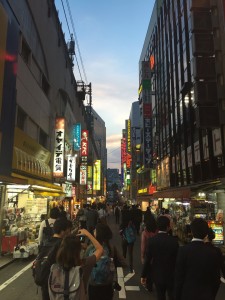
The intro to Japanese culture seminars, outings, and discussions have for the most part been very enjoyable. In sharing some of the activities we did on social media, one half-Japanese friend commented, “I’m so jealous that you’ve already gotten to see more of Japan than I have my entire life.” Even one of our Japanese teachers told us she has yet to see a live sumo match. I think it’s awesome that we’re getting this intensive, condensed exposure to all these facets of Japanese culture, since there is so much to see but so little time. I actually wish we could’ve stayed at some places a little longer, like the Edo-Tokyo Museum, but the schedule is always packed. I feel like this almost constant contact with a new culture in a way helps us to accept it. Meeting and talking to the KIP students was great too. It’s a great opportunity for us to use and practice Japanese, and as mentioned, for me to learn vocabulary, usually through kanji. The discussion on Japan-US relations and the US presidential election was a little challenging, because frankly I didn’t know a whole lot or even anything about some of the issues, coupled with the fact that Rice is on the more politically inactive side of the spectrum by US college standards. Nevertheless, it was nice to hear our Japanese peers share their perspectives, and encouraging that in Japan, a relatively closed country culturally due to its isolationist history, the modern youth are much more globally aware and engaged citizens.
Question of the Week
One question I have about Japan is what are people’s attitudes towards the environment and sustainability as a society on the whole? I wonder, for example, how much being eco-friendly is taught to kids at school. Something that surprised me was the prevalence of using disposable items. Interestingly, the Foreign Minister told us that Japan is one of the most carbon-neutral countries in the world. But almost all restaurants we went to used disposable bamboo chopsticks, the bento from konbini have a lot of excess plastic packaging, and plastic bags are always given with any purchase. This is very different from the US and China, where using reusable utensils is the norm in restaurants, and in China and Hong Kong, where plastic bags cost extra money, to promote using reusable bags. This seems to me simultaneous contradictory to the use of cleaner public transportation, and in line with the efficiency in the working culture.
- Nakatani RIES Fellowship: While this doesn’t directly answer your question, this article on sorting of garbage in Japan is a start to helping to understand some of the issues surrounding recycling and waste management in Japan.
Introduction to Science & Engineering Seminar
Prof. Junichiro Kono of Rice University gave the first science and engineering seminar of our orientation program. His talk gave a brief introduction to some basic fundamental concepts in physics as it relates to the field of nanotechnology, and stressed the importance of quantum mechanics in all the various areas of our research. We started off by asking how one can distinguish between a metal and insulator. The key is looking at conductivity, which is the inverse of resistivity. Conductivity depends both electron mobility and density, but with a simple resistivity measurement we cannot distinguish between these two factors. Therefore, a circuit to measure the Hall effect is needed, since that only depends on the density of charge carriers. We talked about the highly important concept of there being a bandgap in the electronic structure of semiconductors, that can be either thermally or, more easily, optically activated. These materials can have applications in spectroscopy.
The rest of the talk was focused on nano and divided into three parts: nanoelectronics, nanophotonics, and nanomaterials. For nanoelectronics, he talked about spintronics, devices that utilize the spin of particles, such as spin LEDs that produce polarized light depending on the spin of the electron emitting it. In quantum computing, another branch of nanoelectronics, the concept of the ratio between decoherence and operation time being a figure of merit was introduced. In nanophotonics, the most important concept I learned was that we are able to quantum engineer heterostructures to produce quantum wells, which can for example be used in a quantum cascade laser. We can also utilize wave guides and light containment to fabricate photonic and integrated optoelectronic circuits. Finally, nanomaterials such as graphene are very important because they look promising in bridging the “terahertz (THz) gap” between electronics and photonics. Materials science is needed because semiconductor alloy heterostructures can only be made if they have similar lattice constants. I heard of the thermal de Broglie wavelength for the first time for defining the quantum regime and characteristic dimensionality, as well as the effective mass being related to the curvature of the bands. The latter is very important I believe because it relates to heavy fermions, which I research at Rice. I do want to get a clear understanding of what plasmons are once and for all, since I’ve been hearing that since taking MSNE 201 freshman fall, as well as what useful applications they have.
In addition, we had tours of three labs at the University of Tokyo (Todai) on Wednesday. Yamamoto Lab works on mechatronics, the combination of mechanical and electronic components into useful devices. Some applications we got to see (and touch) were haptic force feedback to simulate the friction of different materials, and the sensation of pushing on a soft thing. A really interesting prototype he showed us was a robot that can walk powered only the temperature difference between the hot ground and cool air. We didn’t get to see Murayama’s lab, but he showed us the naval engineering facility, which I found very cool since my dad works in the shipping industry and I was the only one who actually knew about the beluga snout design they showed us. Moreover, I can now explain it to my dad! Finally, we checked out the Mitsuishi Sugita Lab, who produce robots that have medical applications like performing eye surgery. The biggest takeaway for me from these tours was getting to see the international collaborative environment, as there were a fair number of Chinese and other foreign students.
Initial Research Project Overview
I have not yet been given details of my research project this summer, as Saito-sensei did not wish to discuss it over email. However, based on what his lab’s current research mainly focuses on, as well as what Cole (NanoJapan student at Saito’s lab last summer) worked on, I can make a guess that it will most likely involve graphene. Graphene is an allotrope of carbon, sp2-hybridized and arranged in a honeycomb lattice structure. It is essentially a single atom-thick layer of graphite, the 3D bulk material found in pencil lead. This means graphene’s characteristic dimensionality is two, i.e. it is a 2D system. Graphene is very unique because it is the only semiconductor with zero bandgap, and has a linear rather than parabolic relationship between momentum (k-space) and energy. I will probably be studying graphene’s optical and electrical properties, such as conductivity and absorbance. I do not yet know what theoretical and mathematical techniques I will use, but I’m sure it will involve linear algebra and probably differential equations (Maxwell’s equations). If I am solving the band structure of graphene, the most widely-used computational method is DFT (density functional theory). Graphene has many potential applications due to its unique optical and electrical properties, among which include sensors in the THz regime and for pH, as well as lasers.
Research Paper Summary
I will review the following paper, published by Cole Reynolds as first author, based on his work in Saito’s lab last summer: Reynolds, Cole B., M. Shoufie Ukhtary, and Riichiro Saito. “Absorption of THz Electromagnetic Wave in Two Mono-layers of Graphene.” Journal of Physics D: Applied Physics 49.19 (2016): 195306. Web.
I found Cole’s paper pretty easy to follow in general and I think I understood most of it, thought of course I still have questions. The overall picture was to look for and investigate a system that theoretically has very high absorption of THz electromagnetic (EM) waves. This could be very useful in devices like photodetectors, which currently don’t work well (have low power output) in the 1-10 THz range, between electronics and photonics ranges. High absorption would mean a high photocurrent output. More conventionally, the graphene had to made into a complicated shape to increase photocurrent, but this is expensive and impractical.
It was also known that a single monolayer of graphene with high mobility can absorb nearly 100% in the GHz range, and with lower mobility, in THz, though at a prohibitively high Fermi energy (EF, level between valence and conduction bands = 1.0 eV). In this paper, it was proposed that two monolayers of graphene, at the interfaces of three dielectric media and still with lower mobility, has very high absorption, while still maintaining a low EF that can be set by connecting the layers like a capacitor and having a gate voltage applied.
The main mathematical technique that used was the transfer matrix method. This is a way to model the propagation of EM waves through multi-layer media. The incident wave, written as vector of left- and right-going polarization components, is expressed as a function of the transmitted wave (also a vector), by multiplying by a transfer matrix. This is according to the boundary conditions, and equations describing the E and H fields in each media. These equations are relatively simple exponentials, involving a wave vector k. This can be done for each interface, so that the final propagation through all the layers is given by the matrix product of all the transfer matrices. Cole used this because the system he was studying had three layers of dielectric media, and either two layers of graphene at the interfaces between the layers. From the total transfer matrix, we can easily calculate the probabilities of reflection, transmission, and absorption. Absorption probability is especially important for producing a photocurrent, and Cole showed that 93% absorption of 2 THz EM waves by the graphene can be achieved, with EF = 0.55 eV, which is low enough.
The optical conductivity of graphene had to be determined using random phase approximation, for the R term. Cole also investigated the dependence on distance between the two monolayers of graphene, and found that the highest absorption only occurs at lower separation. To increase the range of this high absorption, the dielectric constant could be lowered. In conclusion, the system that was studied had a very simple geometric setup, which means the high absorption result can be quiet easily verified experimentally.
Week 02: Trip to Akita
Our weekend trip to Akita to wrap up the first week was definitely a highlight of my time in Japan thus far. It showed a very different side of life here compared to the fast-paced, crowded Tokyo, and gave us a taste of Japan’s natural beauty, rich culture, and age-old traditions.
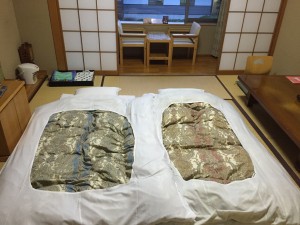
Akita is located in the northern part of Honshu, even farther north than Sendai. We left on Friday morning, first traveling for two hours by Shinkansen to Ichinoseki in Iwate prefecture. The ride was quite an experience in itself. This was only my second time taking the Shinkansen, and it was every bit as great as I expected: fast, smooth, and quiet. Upon arriving in Ichinoseki, we headed straight to Hiraizumi, to visit the famous UNESCO World Heritage sites, Motsuji and Chusonji temples. Our guide explained that these were built by feudal lords of the Fujiwara clan during the 11-12th centuries. The most spectacular sight was definitely the Golden Hall, a temple covered completely in gold that even Marco Polo wrote of. Later that evening, we had a very fun and culture-filled experience at the ryokan we were staying at. I got to try mochi-tsuki (pounding glutinous rice with a giant hammer to make mochi) as well as traditional rope-making by hand. This was followed by a most sumptuous dinner prepared specially for us, with so much variety including tempura, kiritanpo (a local Akita specialty) and the mochi we made! Kiritanpo is pounded rice formed into cylinders, and served in a hot pot. Overall, it was one of the most filling and delicious meals I’ve had in Japan. But the day wasn’t over yet, as we got to have what was probably one of the most unique and memorable experiences of the trip: bathing in a traditional onsen (hot spring). It was not my first time, so the nudity didn’t bother me, and it was a fantastic, relaxing, and somewhat of a bonding experience.
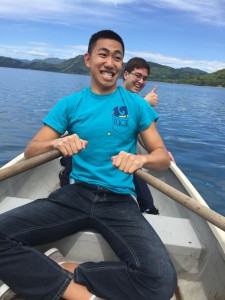
The next morning, we headed out to Lake Tazawa, the deepest and one of the largest lakes in Japan. The natural scenery was absolutely breathtaking. At one point while going around the lake, I caught a stunning view of the mountains and forests perfectly reflected on the lake’s surface, forming an exact mirror image. It definitely moving, and I was reminded again of just how important it is to preserve the environment for places like these. We stayed for about an hour, during which several of us rented row boats. It was very enjoyable and relaxing to just float peacefully on the lake, admiring the tranquil, deep blue water. We also got to see some Akita inus, the same breed as the famous loyal dog Hachiko, though these did look kind of sad in their cages. We met up with several students from local Akita universities for lunch, and proceeded to the Omagari Agricultural High School in the afternoon. We listened to two presentations, one from a former student there who is now a farmer and trying to promote the agriculture industry in Akita, and the other from a group of current students who did research on methods to reverse the acidification of Lake Tazawa. I learned a lot from both talks, and was impressed by the high school students’ effort to present to us in English. Following the presentations, we all had a discussion session together with the KIP, Akita, and high school students, on whether practical activities of primary industries should be introduced into the public education curriculum. The day concluded with another delicious dinner and the onsen.
On Sunday, we were very honored to start off with a talk from the president of the ryokan hotel in the morning. He talked about his experience moving to Akita, and current challenges faced by the tourism industry there. The ensuing discussion with the students was very much related to this, as we brainstormed ideas to revitalize the local economy. I contributed what I’ve seen of Chinese provinces promoting their local tourism in Hong Kong through ad campaigns. My group also had a high school student from Kakunodate, so we got to hear a true local’s thoughts. She was very welcoming of having more tourists from all over the world. After lunch, we got to visit and see Kakunodate for ourselves. It is famous for its cherry trees along the riverbank (though not currently in bloom), and the old samurai warrior houses in the village. We saw some very well preserved examples of architecture from that period, getting to step inside a samurai home. I bought some local morokoshi sweets as a souvenir. Finally, it was time to say good-bye to the Akita students and take the Shinkansen back to Tokyo.
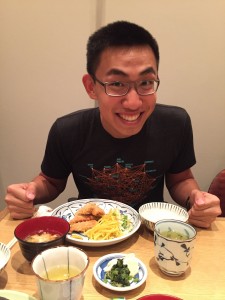
The greatest impact the trip to Akita had on me was seeing all the beauty of nature and old historical buildings. I really made me feel a deeper connection to Japan and its culture. The connection to nature was especially powerful, considering the traditional Japanese Shintoism beliefs. The ryokan was much nicer than I expected: I thought it would be like an inn with very basic facilities but it turned out to more of a hotel, definitely 4- or 5-star in my book. The biggest challenge of the trip had to have been the discussions. For one, there was the language barrier, especially between us and the high school students. The KIP students generally acted as translators during these discussions, but it was difficult to maintain multi-way, forum-style conversations. They were also difficult because the topics were generally not things we’ve ever thought much about, even though there are relevant, and especially important to the local Akita students. In general, the trip was a chance to have some genuine interactions with local Japanese students from Akita, as well as the KIP students, to get to know them better, and share our perspectives with one another. I had some really meaningful discussions, about what we want to do in the future, differences in education, etc. with my roommate Daiki and also one of the Akita students, Kiyohisa. Overall, I found all of them very willing to talk and contribute to discussions. I thought it was inspiring that even the high school students, despite not speaking English, were willing to share their ideas and valuable perspectives. I suppose this may have been a little surprising, as from what we’ve learned about Japanese culture, I might’ve expected people to be a little more diffident and shy about sharing their opinions. Of course, this means I shouldn’t have any strong preconceptions no matter what I hear, and should instead pay more attention to how people actually act, especially once I’m in lab.
The rest of the second week, we had two main cultural activities, an outing to the science and national museums, and taiko drumming. The science museum had some interesting and unique exhibits, though again, our stay was very brief. We stayed a little longer at the national museum, and I really enjoyed appreciating the beautiful calligraphy and art. However, taiko drumming was definitely the highlight of the week. It was only one hour, but there was just something about the power of the beat and cleanness of our rhythms that was quite exhilarating. I also really enjoyed our second discussion with the KIP students, which was this time on artificial intelligence. Our group’s discussion explored all sorts of relevant areas, including emotions, ethics, and philosophy. I loved hearing what each group had to share and the spontaneous debate that followed. The second week of Japanese classes have continued to go well. I feel I have more or less caught up with verbs and conjugations, and moreover learned several very useful sentence structures this past week.
Question of the Week
One question I have this week is about how average Japanese people see foreigners. Are they all as friendly and welcoming as those we’ve met?
- Just as in any country, attitudes to foreigners vary in Japan and attitudes can also vary by region of Japan. For example, you may have noticed some differences between Akita, a more rural agricultural area, and Tokyo? Overall, Japan is very welcoming of foreign tourists – especially those who are make an effort to learn Japanese and understand the culture and society. It is always best to assume positive intent in your interactions when abroad first. It is likely that over the course of your 13 weeks in Japan you may encounter a few unpleasant interactions though; as you would in any country that you visit.
Introduction to Science & Engineering
Prof. Christopher Stanton from the University of Florida, who is also my US co-advisor, gave two science and engineering seminars this week. We also had two guest lecturers, Otsuji-sensei from Tohoku University, and Ishioka-sensei from the National Institute for Materials Science (NIMS).
Prof. Stanton’s first talk gave a brief overview of semiconductor devices. Semiconductors are defined as having a 0-3 eV bandgap. The gap is needed for transistors and optically active devices, i.e. can absorb or emit light. He introduced spaghetti plots of band structure, which show bands in momentum space. I learned why direct band gaps are needed for optically active devices: the different in momentum of the hole and electron must, by conservation of momentum, equal the momentum of the photon, which is effectively zero. I first heard of the concept that strain can reduce effective mass. He then talked about bandgap engineering by creating nanostructures. He said that the photovoltaic effect in semiconductors is analogous to Einstein’s photoelectric effect for metals. I learned how LEDs work, that they contain crystalline semiconductors, and of Haitz’s law, Moore’s law for LEDs. I want to learn about the band structure of heterostructures, e.g. at junctions.
Otsuji-sensei’s talk was on graphene THz science and technology. He explained the motivation behind needing THz devices, as it relates to wireless communication: a faster bitrate requires a higher carrier frequency. He talked in more detail about graphene, and how it has massless carriers. I heard for the first time the concept of negative conductivity, which relates to the electrons occupying higher energy states from IR pumping, and how that leads to gain. He talked about using graphene in lasers and FETs, which could be relevant to my research.
Ishioka-sensei’s talk was divided into two parts. The first was about being a female scientist in Japan, and the second about ultrafast femtosecond spectroscopy. I learned that Japan is one of the few countries with fewer girls than boys in college, which really surprised me. Actually I noticed there was an imbalance in the Nakatani Japan Fellows too. The talk on femtosecond spectroscopy was very useful. Prof. Stanton’s second talk had a lot of overlap with her second part. I understood that the basic principle is such fast pulses are needed in the same way as stop-action photography. We need them to probe molecular dynamics like electron-electron scattering which occur on such time scales.
A black body is an idealized physical object that perfectly absorbs all incident EM radiation, regardless of wavelength or angle. A black body spectrum is the continuous spectrum of the output EM wave frequencies radiated by a black body. This spectrum depends only on the temperature of the object, and obey Planck’s law, which looks a bit like a skewed bell curve. There is a characteristic peak wavelength, that shifts lower as temperature increases according to Wein’s displacement law. For example, room temperature objects have a peak in the infrared, while objects at a several thousand degrees have a peak in the visible region. The temperature of the Sun at the surface is about 5772 K, meaning its peak is near yellow-green.
This temperature can be used to calculate the power output by the Sun, assuming it’s a perfect black body, using Stefan-Boltzmann’s law , where P is the power emitted, σ is the Stefan-Boltzmann constant 5.67×10−8 W m–2 K–4, A is the emitting area, and T is the absolute temperature. Taking A to be the surface area of the Sun, 6.0821×1018 m2, we calculate P to be 3.828×1026 W, also known as the luminosity. Now using the inverse-square law, and assuming the power is emitted from a point source and spreads in spherical shell, we can calculate the power per m2 at a distance of 1 AU = 1.496×1011 m: (3.828×1026 W)/(4π×(1.496×1011 m)2) = 1361 W m–2. This is a commonly accepted value, and known as the solar constant. However, this is only an approximation of the Sun’s power received on the surface of the Earth. The Earth is not a flat disk; it is sphere, which means only the surface at the equator is perpendicular to the sun’s rays. At higher latitudes, the power would be spread out over a larger area. Additionally, albedo plays a huge effect on how that power is absorbed. Albedo is a measure of how reflective a surface is, as a percent. Thus, snow and ice have high albedo, reflecting rather than absorbing most light, while forest have low albedo and absorb most light. Finally, there is the effect of the atmosphere, which can trap and re-emit reflected light. Ignoring these effects and using the solar constant value, we can calculate that a 0.15 m2 solar panel with 40% efficiency will be needed to power my 85W laptop.
I will be studying graphene this summer, which indeed has some unique optical properties. It has unusually high opacity for a one-atom monolayer, absorbing only about 2.3% of red right. This means the monolayer can be seen with the naked eye. However, recent studies (http://www.surrey.ac.uk/mediacentre/press/2016/surrey-unveils-graphene-%E2%80%98moth-eyes%E2%80%99-power-future-smart-technologies), including Cole’s, show that graphene can actually have close to 100% absorption with certain nanostructures. I was not able to find sources on whether graphene’s optical properties are changed by quantum confinement effects, but I wouldn’t think so, because that generally applies to semiconductor alloy heterostructures. Graphene’s band gap can be tuned, i.e. opened by applying a voltage in a FET setup, such that its response is in the THz regime. This might be a way to experimentally probe graphene using optical techniques.
I also have a quick update on my research project. Earlier this week, I got an email from Saito-sensei, asking if I knew about deep learning, and how Alpha Go defeated a Go champion earlier this year. He told me our goal is use deep learning to “enhance electric field at graphene surface by changing the possible patterns of dielectric thin layers.” He has asked me to do some research on deep learning, as well as try to find a simple program and run it. I do not know much about all this, having only taken intro computer science classes, and have not yet had time to look much into it. I do plan to contact my mentor before going to Sendai, to have some more guidance on what Saito-sensei wants me to do exactly.
Week 03: Noticing Similarities, Noticing Differences
Public transportation is a huge part of the city culture in Tokyo. The majority of people take the subway and buses to school or work instead of driving. As I noted the first week, this is very familiar to me, having lived in Hong Kong. While the experience is largely similar to what I’m used to, during these three weeks in Tokyo, I have also noticed certain aspects that are different or unique to Japan.
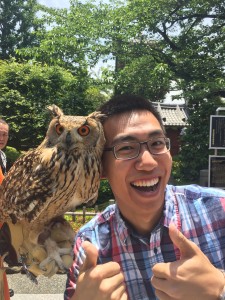
As with many things, there are some unspoken “rules” that people here follow on public transportation. For the most part however, the etiquette is very similar to what would be expected (though perhaps not always followed) in Hong Kong. Because many of these rules are rather banal to me, it perhaps took more effort for me to consciously notice them than some of my peers who have never taken public transportation. One example would be people standing near the doors willingly stepping off the train to let other people out when it’s too crowded. This is generally followed in Hong Kong too, but perhaps less willingly, as in they are pushed out from behind. Another rule is that when lining up on the platform waiting to board, you keep to the sides of the door so that passengers can leave through the middle, and also wait for them to all get off first. Again, this is also the rule in Hong Kong, though people seem to follow it better here. I did see something new though, at Shibuya station. Apart from markings on the floor for lining up on the sides, there were also lines marked for “second” and “third” train. Presumably this means when it is extra crowded, people who don’t fit in the “first” train (side) lines will know to not try to squeeze on, in order to leave some space on the train so passengers at later stations can get on. A few smaller points are that people leave a slight gap when sitting in seats, and also stand close to each other when needed though not so close as to be uncomfortable. These are all thing I found normal, though I know some students really noticed things like the lack of personal space. Naturally, many of these rules are for dealing with crowded trains around rush hour and are not applicable at other times. The acceptable distance between people would also obviously change depending on how crowded the train is.
A major difference, that I already noted the first week, is people not giving up their seats for others. In both Hong Kong and Tokyo, there are priority seats, where it explicitly says you must give it up for the elderly, pregnant women, people with disabilities, etc. However, in Hong Kong and China, the large majority of people would feel and act like that rule really applies to all seats, and give theirs up when needed. This is not the case in Japan however, and it’s actually been kind of uncomfortable for me to see people not budging when an old person gets on, and especially not moving myself when I do have a seat. It simply goes directly against what I was taught from a young age, what’s even announced on trains and buses. I think, for my brain to cope with the cognitive dissonance, it’s been forced to come up with an explanation: because people have longer life expectancies in Japan, you have to be an older age before you’re considered old enough to be offered a seat. I have no idea if this is actually a factor at all in reality. Another difference is that when the train is more empty, there would sometimes be free seats that standing people choose not to take. This is basically unheard of in Hong Kong; the only time you’d see free seats is when the train is very empty, and there is no one still standing. Granted, this isn’t too common here either, but I have seen it nevertheless.
People on trains mostly either just sit or stand doing nothing, close their eyes to rest, or look at their smartphones. From my advantageous height, I’ve casually observed that those on their phones are usually texting, reading emails, or playing mobile games, so all pretty standard. However, the biggest thing that people don’t do on the trains is talk! On the phone especially, I might’ve seen it a couple times, but I remember they spoke softly, covered their mouth, and kept it brief, maybe just telling them to call again later. I’ve seen stickers everywhere about turning one’s phone to “manner mode”, which I’m guessing means silent (unless it’s actually a switch like airplane mode but only on Japanese phones?). People generally don’t even talk to whomever they’re travelling with, which is a quite unusual for me. Back home, it’s normal to talk with your friends on the train. This definitely makes us stand out when we travel as a group, though we do constantly remind ourselves to keep it down. Overall, it’s just really quiet on the train, which I definitely noticed the first few times because it was so strange. I also don’t think I’ve seen anyone reading a paper newspaper, whereas in Hong Kong and US it’s a fairly common sight. Perhaps this is because the paper size and crinkling noise would be too much of an annoyance to others, and it’s a matter or politeness.
From all this, I’ve really learned and seen firsthand the importance of some of those core Japanese values we discussed. In particular, the experience taking public transportation in Tokyo has helped me to understand and appreciate the wa (harmony) and kata (form) aspects. The lack of talking is seen as maintaining a peaceful environment, and the rules about lining up are all about form. That said, some of those rules are also really just born of practicality. In particular, I think the additional lines at Shibuya, the busiest train station in the world, are the result of people not being able to get on at the next one or two stations, because every train leaving Shibuya would’ve been packed, and people haven’t gotten off yet. Overall, the main difference with public transportation in the US is its convenience. In Houston, there are only three light rail lines that don’t really go anywhere useful. The buses are even worse, some only coming every 30 minutes off-peak, so it takes forever to get anywhere. It’s not hard to see why public transportation is not nearly as popular as in Japan and everyone drives. The biggest issue is that in majority of the US, there is a heavy stigma attached to public transportation, that only poor people take it. It’s evident in the dirtier stations, the emptier buses, and types of people usually taking it. This effect is circular, meaning we’re trapped in the current state. A more positive difference is that people generally seem more friendly in the US, and it wouldn’t be seen as too inappropriate to start a casual conversation with a stranger.
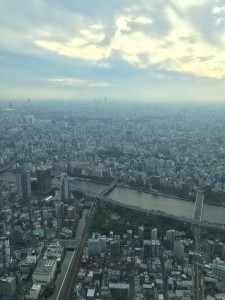
Saturday of the second week, we went to Kamakura with some KIP students. It was an enjoyable day out, experiencing both cultural sites and nature. On Sunday the day after, I went to the Tokyo Skytree with Rony. It was truly an awesome sight the moment it first came into view. We stayed for over 3 hours and got to see Tokyo transition from day to night. The first cultural lecture of the week was given by Prof. Shimizu from Rice. She talked about how baseball has influenced US-Japan relations, and it actually turned out to be very interesting, even though I never really cared about baseball. Partially thanks to her talk, I decided to go to my first baseball game (Swallows vs. Buffalos) at Jingu Stadium on Saturday with most of the others. Packard-san also gave talks on cultural norms and the role of religion in Japan. They were very useful in placing what we’ve learned and experienced in context. I think I’ll find it useful to keep in the back of my mind when interacting with lab members. The third and final evening discussion session with KIP students was on science and ethics, specifically, using genome information. Like the last one, I found the discussion engaging, especially when we encountered differences in Japanese and American views on certain things, like the government. On Thursday evening, we went to watch a single act of kabuki, a traditional Japanese play called Yoshitsune Senbon Zakura. It was definitely one of the most interesting and unique experience in Japan so far. There were a lot of rules just to get in. The performance was unlike anything I’d ever seen or heard, the music simple yet hauntingly effectively, but my favorite part had to the special effects – trapdoors, acrobatics, and a spectacular ending! I had an activity-packed last day in Tokyo on Saturday: Sensoji in the morning, baseball game in the afternoon, and Odaiba in the evening. It was very fun, but there are still many places in Tokyo I want to explore! The last week of Japanese classes went well, we spent a lot of time preparing to give our final speech on Friday. I’m pretty happy with the speech I wrote, as I tried to use forms and grammar we learned as much as possible, thought I could’ve improved my delivery if I’d practiced more. I’d like to continue learning and practicing Japanese, but my lab is very international and English is the main language spoken. I do have the workbook, and can try to practice with Saito-sensei.
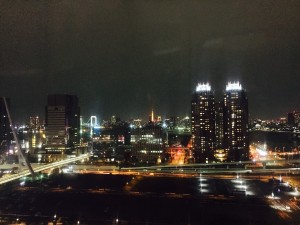
Question of the Week
My question this week is related to Packard-san’s talk. How is the young generation in Japan changing in their attitudes towards tradition, both tangible things like wearing kimonos and intangible societal values like emphasis on community. Do they for example enjoy watching kabuki? Is there a conflict between tradition and becoming more westernized? How is society at large adapting to deal with this?
- Cultures and societies are living, breathing entities and there are shifts and changes over time, particularly among generations. While the values that underpin the culture or society may be slow to change, they may be expressed in different ways from generation to generation. Japan, similar to many countries and cultures, is concerned about maintaining its cultural traditions and, in particular, its traditional art forms. You may want to talk with the Japanese students you have met or that you will get to know at your host lab to see what traditional Japanese art forms they know of or practice and what they think of thinks like kabuki, taiko, or tea ceremony. You will probably get an array of different answers to these questions depending on who you ask. Here are some related articles that you may want to read for more on this and related topics.
- “’Hafu’ tells story of Japan’s mixed-race minority and changing attitudes in society”, Japan Today, November 16, 2013
- “Japan’s change generation”, Foreign Affairs, May 1, 2014
- “Pachinko parlors court Japanese youth”, New York Times, September 6, 2014
- “Preserving tradition in Japan”, New York Times, October 8, 2014
- “The fragile happiness of Japan’s insular youth”, East Asia Fourm, September 17, 2014
- “The top 20 things Japanese youth are distanced from”, Japan Today, April 9, 2015
- “Five facts from Japan’s youth survey”, Wall Street Journal, April 22, 2015
- “Art of Japanese storytelling makes for a compelling anime”, Kotaku, May 15, 2016
- “Japanese companies, winds of change”, Economist, June 6, 2015
- “Changing the culture of long hours key to to increasing Japan’s female workforce”, Japan Times, July 31, 2015
- “Japan’s emerging culture of innovation: The invisible things can be the hardest to change”, Forbes, November 10, 2015
- “Japan pushes traditional ethics with an eye to the past”, Wall Street Journal, December 27, 2015
- “Setsuko Hara and the changing face of Japanese womanhood”, Japan Times, January 1, 2016
- “Japan’s changing attitude towards smoking”,com, January 3, 2016
- “Overworked teachers call for change as extracurricular supervisions takes a toll”, Japan Times, March 7, 2016
- “Guesthouses are proliferating in rural Japan, but at what cost?”, Japan Today, April, 2014, 2016
- “Japan won’t depopulate quietly into the night”, The Diplomat, May 20, 2016
- “Death of a salaryman”, Wall Street Journal, May 30, 2016
- “Changing career goals for female students in Japan”,com, June 2, 2016
- “The student group in Japan that’s made it cool to protest”, Global Voices, June 5, 2016
Introduction to Science & Engineering Seminar
Prof. Jonathan Bird is a Professor of Electrical Engineering from the University at Buffalo, and gave two science and engineering seminars this week. We also had two guest lecturers, Aoki-sensei from Chiba University, and Dr. Elizabeth Lyons, the director at the NSF Tokyo regional office.
Prof. Bird’s first lecture was on semiconductor bandgap engineering. What this generally means is using alloys and heterostructures to create specific shapes in the band structure at, say, junctions. He started with a gentle introduction to semiconductors, which have a forbidden gap of about 1 eV (thermal energy is about 30 meV at room temperature). Topological insulators were explained as being insulating in bulk but conducting at the surface. We were introduced to the energy band diagram at junctions, in particular the slope behavior in the depletion zone of a p-n junction, as well as bending under an applied electric field. The three types of semiconductor boundaries were shown, with type I being the most common. Heterojunctions that can produce 2-D electron gas and work as LEDs were shown. Dr. Bird’s second science lecture focused on graphene and how it can impact nanoelectronics. He started with a quote on the two major challenges in the semiconductor industry: extending CMOS by continuing to scale down components on chips, and the bigger one, developing new information processing technologies. Graphene is a potential candidate, and will be discussed in more detailed below.
Aoki-sensei, from Chiba University, gave a talk on scanning probe microscopy (SPM) and scanning gate microscopy (SGM). The basic operating principle of scanning tunneling microscopy (STM) is that the tunneling current from the sample to the probe is proportional to the exponential of the distance. As the sample is scanned line by line, an image of the surface topography is formed. The current also depends on the density of states in the material, which varies between metals, non-metals, and semiconductors. Importantly, different bias voltages can produce very difference images. Early atomic force microscopy (AFM) used the STM tip and a cantilever, but now lasers are used. There are two types: contact (using DC), which can damage the sample, and tapping (using AC), which oscillates at 100 GHz. SGM is a technique that not only maps the surface, but also the bulk material. It uses a setup similar to a transistor, with source, drain, and gate. SGM can be used to study electronic transport in materials like carbon nanotubes and MoS2.
Dr. Lyons, of the NSF Tokyo Office, gave a very interesting and rather inspiring talk about science diplomacy and our role as students. She broke this topic down into three main areas: science for diplomacy, diplomacy for science, and science in diplomacy. We talked about ways in which scientists make good diplomats, like collaboration and numeracy skills, as well as ways in which we’re not so good. Ultimately, Dr. Lyon wanted us to think about what we can get out of this international experience that’ll really make up stand out. She called us “unintentional diplomats”, but challenged us to rise above a national perspective and tackle global problems, and also advocate for science and spread our enthusiasm. Her talk was followed by a very engaging Q&A session, in which people asked some excellent, thought- and discussion-provoking questions.
Moore’s law is an empirical observation, first stated by Intel co-founder Gordon Moore in 1965, that the number of transistors on a chip doubles every 18 months to 2 years. In a way, the law has been almost self-fulfilling, driving research and production in the semiconductor industry. This has had significant consequences on almost all aspects of our daily lives, from smartphones to kitchen appliances, in what some term the semiconductor revolution over the past 50 years or so. However, we are starting to approach the end of Moore’s law due to fundamental physical limitations on the atomic scale, and will reach the ultimate limit in a decade or so. This is why the search for alternatives to silicon has never been more important, to continue driving our technological advancement.
One way this can be achieved is by shifting from “top-down” to “bottom-up” nanostructures. Currently, silicon chips are manufactured through photolithography, that is, starting from bulk material and etching away sections to create tiny circuit features, (top-down). Instead, new approaches currently under research start from atoms, and using techniques like molecular beam epitaxy, components are built up layer by layer (bottom-up). At such nanoscales, quantum mechanics can affect the operation of devices. In transistors, it is estimated that at the 5 nm node, electrons will tunnel through logic gates, hence leading to errors in calculations. On the other hand, quantum effects can actually be utilized. For example, with quantum confinement in heterostructures, we can create discrete energy levels and enhance optoelectronic devices. Spin is another quantum property that can be exploited in devices.
Graphene is a popular candidate for replacing silicon for its various desirable properties, and especially interesting to me because it’s what my research this summer will be on. It has an unusual band structure with linear rather than parabolic energy bands, meaning its electrons and holes have zero effective mass, like photons. This leads to very high carrier mobility, compared to those in silicon, and corresponding low resistivity, meaning more power-efficient devices. It also has high current-carrying capacity, thermal conductivity, and strength, all potentially advantageous to have in electronic devices. However, there is one major problem, which is the lack of a bandgap in graphene. The resistance at the Dirac point is still finite, meaning graphene has a low on/off ratio. Combined with the Klein tunneling unique to graphene, this means it can never be turned off, which would make a CMOS inverting configuration impossible and cause everything to melt from billions of such transistors producing heat. There are ways to introduce a bandgap however. One way is by applying an electric field perpendicular to bilayer graphene, which opens up a small gap. Another, probably better, solution is graphene nanoribbons. This is an example of quantum confinement giving discrete energy levels, which leads to an effective bandgap between allowed energies. A smaller channel width means a larger bandgap, and one way to do this is by unzipping CNTs.
As I start the research internship at Saito-sensei’s lab, I believe I will quickly be taught the theory and techniques I need to know, from both my mentor, Shoufie-san, and Saito-sensei. However, I would like more guidance on the deep learning part of the project. Saito-sensei and Shoufie-san have both admitted they don’t really know much about machine learning or neural networks, so it sounds like I will have to do a lot of learning on my own. While I understand the general idea, I still don’t yet know the details of how I will implement an algorithm to do what Saito-sensei wants. That is, finding an optimal pattern of dielectric layers to enhance the electric field at the graphene surface. For example, I don’t know what measure will be used as a heuristic, nor what will be used as the training data.
Week 04: First Week at Research Lab
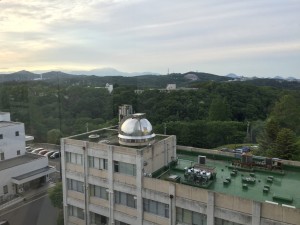
I have had an overall very enjoyable first week in Saito-sensei’s lab. The first day started fairly early. My mentor Shoufie-san came to pick me up from Urban Castle Kawauchi, the dorm where I’m staying, at 8:30. We took the new Sendai subway line, which only opened last December, to Aobayama station. Tohoku’s Aobayama campus sits at the top of a small forested mountain, and I found the natural environment a very pleasant change from the concrete jungle of Tokyo. Almost right after arriving, I met with Saito-sensei. He welcomed me to the lab, helped me get situated in his lab as well as the area, and explained my project in a bit more detail. After that, Shoufie-san took me to see Nugraha-sensei, one of the assistant professors in the lab. He is also the sysadmin for the lab, and helped me set up SSH to access the lab’s server, mail client, wiki to keep a daily record, etc. And then, it was pretty much straight to work! Being in a theoretical research lab, there wasn’t exactly any machinery or equipment I had to get trained on, which meant I could start learning the relevant math and physics from Shoufie-san immediately. At 3 pm, I met with Saito-sensei again to discuss the day’s progress, and this is the time we set to meet every day.
Shoufie-san is from Indonesia, currently working towards his PhD, and was also Cole’s mentor last year. He is very friendly and easy-going, and I find it easy to work with him. He always patiently listens to me explain what I’m trying to do, makes sure he understands first, then offers helpful suggestions. Saito-sensei’s lab is very international as a whole, which means English is the main language spoken. I don’t think my Japanese ability will affect my work and reasearch, and may only hinder my communication with the secretaries and Japanese students. However, I do hope to have some opportunities to practice, as many of the foreign students have been learning Japanese, too.
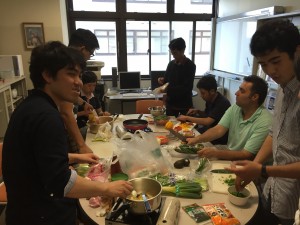
Though there weren’t any special welcome activities for me on the first day, we did have a party Friday evening, primarily for me and two other new lab members. Because I have my own desk in the office for visitors, I didn’t have much interaction with my lab mates until this party. We all cooked together in the break room, and the food was actually really good considering it was made on portable gas stoves by a bunch of nerdy physics guys (no offense of course). Kidding aside, I enjoyed the casual setting to get to know everyone a bit better, especially Saito-sensei, who talked about some pretty funny things! It was honestly just really fun, and a great end to the week.
Urban Castle Kawauchi is Tohoku’s dorm for international students. All the rooms are single, albeit very small, probably even smaller than at the Sanuki Club. Obviously, compared to the dorms at Rice, the rooms are tiny! Compared to Hong Kong however, it’s not actually much more cramped than my old bedroom, in our small apartment. The amenities are naturally not as convenient as in a hotel either, though still more than satisfactory. There is a shared kitchen and dining area with stoves and rice cookers for our use. Free wi-fi is available in the common and lounge areas, but not in the rooms (unless, like me, your room happens to be close enough to pick it up). Something unusual for me that I’ve never seen before is that you have to take off your outside shoes as soon as you enter the building, like in a Japanese home. In my mind however, the public areas of the building are still “outside”. Though the subway is available now for commuting, it costs ¥200 per trip even though it’s only 2 stops, and I still have to walk about 10 minutes at either end. So, like students in previous years, I have been commuting by walking up and down the mountain every day. It’s not as bad as it sounds though, the slope is quite gradual and it only takes about 30 minutes. I find it quite refreshing to walk by the trees, though that could change as it gets hotter.
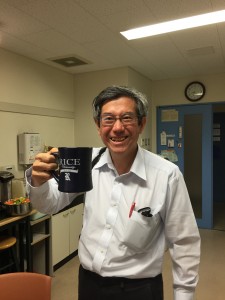
As mentioned, Saito-sensei wasted no time in getting me started on my research project. The first week was spent familiarizing me with the transfer matrix method, the main mathematical technique used, as well as the general context of the problem. The goal of the project, explained in more detail below, is to use deep learning to enhance electric field by changing the patterns of dielectric thin layers. Saito-sensei seems pleased with the rate at which I’m progressing, and this week I will move beyond what we already know, into the deep learning part. I suppose this is my main concern at the moment, as Saito-sensei has said, he is not familiar with deep learning himself, and expects me to learn then teach him. It’s such a big unknown, and because I don’t know enough about deep learning at the moment, I simply don’t know how well it will work. However, Saito-sensei believes in the project, and also that it’s not too difficult, so I should trust him.
Overview of Orientation Program
I very much enjoyed the three-week orientation program in Tokyo. Even though the very busy and packed schedule was tiring at times, I’m glad I got to see and experience so much. Though it varied week to week, there was generally a good balance between the science lectures, culture seminars, outings, and free time, in my opinion.
Probably the most useful thing I learned and really believed after experiencing it first-hand is the importance of timeliness in Japan. All our lectures and lessons started on time, and perhaps most impressive was how precise and on-time Shinkansen is every time I’ve taken it. This is important during my research internship, to never be late, especially with meeting Saito-sensei every day. I’ve learned that I can be very meticulous about keeping track of money. Making a budget sheet is not really something I’ve had to do before, but since arriving a month ago, I’ve kept track of literally every single yen spent. This is useful skill, and I intend to continue recording on my spreadsheet. I really appreciate having the intensive Japanese lessons. The teachers were all very nice and patient, especially with my constant requests for the kanji. I think I have enough of a foundation in grammar to learn more complex structures. As mentioned, I don’t think I’ll have many opportunities to practice in lab. However, I will try to self-study from the textbook when I have time.
Question of the Week
My question for this week is: Do most Japanese people work on the weekends? I’ve heard about the overtime culture in Japan, but saw it myself last week. I had left my charger in lab on Friday, went to go get it on Saturday morning, and Saito-sensei as well as my office mate were both there. How does it depend on seniority?
- What you are observing is probably most influenced by the culture of academia. Professors and those working in academia often work long and varied hours. They may spend most of their work week in administrative meetings or in meetings with their graduate students which leaves them little time to, for example, focus on writing research grants, reading/editing their graduate student’s papers, or other tasks that require longer periods of focused, uninterrupted time. Therefore, they can often be found working in their offices (or out of their homes or coffee shops) late at night or on the weekends when most staff and students have gone home and it is quiet and easier to focus. Graduate students and post-docs often come in at varied hours too for the quiet, focused time they may need for writing work or when their experiments call for extended time in the lab – after all they are usually pretty motivated to graduate. So, there is a culture of academia to consider here too. However, Japan is known for having far longer working hour expectations than in the U.S. and in industry it is not uncommon for people to work very long hours at the office. There have been calls and movements to change this and reduce the work hour expectations but Japanese society and companies are slow to change. For more on this topic you may want to read some of these articles or consult Google-sensei to see what else you can find out on this topic.
- “How many hours should academics work?”, Times Higher Education, January 14, 2016
- “So much to do, so little time”, Inside HigherEd, April 14, 2014
- “Clocking-off: Japan calls time on long work hours culture”, The Guardian, February 22, 2015
Research Internship Update
Research Project Overview: My project is on photonic crystals, one-dimensional lattices comprised of many thin layers of two different dielectric media (A and B) in some pattern (e.g. ABAABABBA…). We want to use deep learning and neural networks to teach a program how to recognize and predict whether a random pattern will have good transmission or enhancement. A good transmission spectrum might have a very sharp peak with high Q factor at some given frequency, and good enhancement means a high relative E field intensity at some position within the crystal. We may possibly look into genetic algorithms to “breed” good patterns. The goal is to find, for example, the best possible 100-layer lattice, without having to calculate all 2100 patterns, which would clearly be unfeasible. A sharp transmission peak can be used as a filter, and enhancement of the E field at or near the surface, with a layer of graphene, has potential applications in improving Raman spectroscopy and other characterization methods.
Research Methods: I wrote several Matlab programs last week, each building on the last. Firstly, the transfer matrix can be calculated for any lattice pattern. Then, the transmission spectrum as a function of frequency around a central frequency, as well as the E field intensity as a function of position (z) through the lattice can both be computed. Once we have these curves, we can evaluate how good they are, by calculating the Q factor for the central peak in the transmission, or the value of enhancement. These evaluating functions are highly important for the deep learning network, because they are the functions we want to minimize or maximize to find the best possible pattern. The deep learning framework we will be using is called Caffe, developed at Berkeley. It has both a Python and Matlab interface, which is very convenient for me as those are the two languages I know well, and also makes it compatible with my work so far.
Training: Pretty much the only “training” I will get on background knowledge has already happened. The first couple days, Shoufie-san taught me everything I needed to know about the transfer matrix method, the main mathematical technique used in Cole’s paper. I derived the boundary conditions and E and H relations from Maxwell’s equations, namely Faraday’s and Ampère’s laws, which I learned briefly but never had any practice using in their mathematical formulations. From here, I’m pretty much on my own for the deep learning part, because neither Shoufie-san nor Saito-sensei know much about it.
Questions or Issues: My main concern is about how well deep learning will work in solving our problem. For example, what if none of aforementioned 2100 patterns give what we want? Then we’ll never find a good pattern. Or what if the behavior is chaotic, and there’s actually no real relation between the pattern and the transmission/enhancement, making it impossible to learn and predict?
Timeline: A complete project timeline is not yet available at this time. In the short term, this week I will be working on getting Caffe installed and running some example models, to get familiar with how it works and have an idea of how to use it for our problem.
Return to Top
Week 05: Critical Incident Analysis – Life in Japan
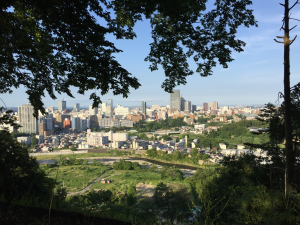
During the three-week orientation period in Tokyo, we needed to communicate several times with our host professor via email on matters like our project, mentor, and travel logistics. We had been told more than once how important it was, especially in the Japanese work and lab culture, to always reply as quickly as possible to our professor’s emails, including sending a brief message if we cannot reply in detail immediately. Despite this, I ended up replying to several of Saito-sensei’s emails more than a day, once even a few days, after receiving them. I honestly didn’t think it was that big of a deal, because I had explained to him how our schedule was so packed every day and that Internet access wasn’t always available. Moreover, each time he seemed, to me at least, very amicable in his reply, with no indication that the speed of my replies bothered him at all.
I first caught on that something might not be right when I was cc’ed on an email from Saito-sensei to Youssef, explicitly saying that he did not get any email from me, followed by “I hope that he will come to Tohoku University.” I was a little worried then that he might be annoyed, but decided that since I was going to reply soon, combined with what I perceived to a joking tone in that last sentence, everything was fine. So imagine my surprise when Dr. Kono got in contact with me during the last few days of orientation to ask if everything was okay, and whether I’d been replying to Saito-sensei’s emails! It turned out that Saito-sensei had been sending emails to Dr. Kono expressing his discontent about me not replying quickly enough. Upon hearing this, I of course immediately composed my reply to Saito-sensei’s most recent email, and in it apologized for all the previous slow replies. I even had Packard-san read over it, and she suggested some pretty significant changes to make sure I was conveying the right tone, before I finally sent it.
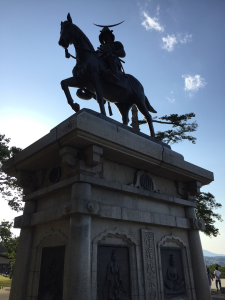
I did often start my emails off with a brief apology for the delayed response, even though I always knew in the back of my mind that I should have been replying more quickly and felt bad every time I had to say that. I kept making excuses – how we had so little time between Japanese classes and seminars and outings, and how tired I was every day, which surely meant he would be understanding of my slow replies – and started telling myself that maybe it didn’t actually matter that much. After all, in my experience back in the US, it was never really a big problem to reply a little late to an email, be it from a professor or otherwise, as long as I offered a valid explanation. In retrospect, I should have realized how important promptly replying is to Saito-sensei, because I eventually noticed that, as long I send it before 5 pm or so, he would always reply to my emails within a couple hours.
Despite the fault being largely my lack of diligence, there were positive intentions on both sides motivating our actions, that may have deepened the misunderstanding. For my part, another factor in me not replying immediately was that in certain cases I did not yet have the info he asked about. The best example was regarding the Shinkansen tickets, and which train we’d take, to arrange getting picked up from the station. Saito-sensei had proactively asked for this information before we received the tickets and checked the timetables, whereas I was planning to email him with that info after. Of course, the correct thing to do was simply email him letting him know that was the case. But instead, it seemed to me at the time more efficient to just wait another day or two when I do have all the information, and tell him in a single email directly. A positive intention on Saito-sensei’s part was possibly deliberately not mentioning anything about my slow replies to me directly. He probably wanted to avoid creating friction in our relationship before we even met, which is why he chose to resolve things through Dr. Kono instead. This indirectness can be seen as maintaining wa or harmony, an important an aspect of Japanese culture as we learned. However, for someone like me who can admittedly be a little dense with such things, a more direct “Also, please reply more promptly to my emails” would’ve been both appreciated and ensured I stopped replying late from then on.
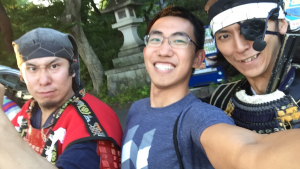
The email I had Packard-san look over was only sent after 5 pm the last Friday in Tokyo, and I was told Saito-sensei doesn’t check his email on the weekends. Even if he saw it before leaving, I never got a reply from him, so the next time I heard from him was in person, when I was in lab the first time the following Monday! I was genuinely so worried that I had blown my only chance to make a good first impression on Saito-sensei, and had been quite apprehensive about meeting him on the first day. However, he was very friendly to me, and had me get started immediately. I still wanted to apologize in person, and I only got a chance to do that later in the day. He kind of laughed it off and told me to not worry about it, but did again remind me how important is it to have good communication, which I absolutely agreed with. I certainly learned to always reply as quickly as possible to emails, not just to him, but also my mentor and lab mates, and my professors when I return to the US.
Question of the Week
My question this week is about sports and fitness in Japan. Walking to and from lab every day, I always pass by a big sports field and tennis courts. I think every day, there are students from the nearby high school exercising and playing team sports like lacrosse and rugby on the field, and other people playing tennis. So I wonder, are these activities mandatory for all students as part of PE? How active is the Japanese population on the whole?
Research Project Update
June 17
- Finally got MatCaffe? working, MNIST does not seem to be working
- Installed Caffe (/liu/caffe) on tube61 (Ubuntu 15.04) with ATLAS, CPU-only, ran catnet, still slow, maybe even slower than Mac! (~6 min/20 iterations)
- Moved cat images to flex, continued training
- Installed OpenBLAS on tube61 to try to rebuild Caffe with OpenBLAS
- Installed Intel MKL (commercial, got free student license) on tube60, installed caffe (/liu/research/caffe) on tube 60 (Ubuntu 12.04) with MKL, CPU-only, not yet tested catnet
To do:
- Rebuild with OpenBLAS
- Finish training catnet
- Look into OpenMP for parallel processing support, OpenMP+MKL gives performance comparable to GPU
June 16
- Downloaded 7000+ cat and dog images
- Training catnet is slow! 5 min/20 iter (1000 in total)
- Downloaded MNIST dataset, trained in about ~10 mins
- Python wrapper installed properly, MATLAB not working, so can’t yet deploy
To do:
- Test MNIST by deploying on either Matlab or Python
- Look into GPUs, Saito-sensei might buy one to install on lab server
June 15
- Talked with Shoufie-san about basics of neural networks, showed him the power of genetic algorithms, discussed ideas on how to use networks to find/generate good sequences
- Continued troubleshooting constant errors, build Caffe, but make runtest failing
- Found that laptop’s GPU is too old, not powerful enough, built in CPU-only, finally passed all tests
To do:
- Learn how to use Caffe, run example programs MNIST and catnet
- Install MATLAB and Python wrappers/interface
June 14
- Installed Homebrew, Miniconda (lightweight Anaconda Python distro)
- Installed CUDA, other libraries Caffe has as dependencies
- Saito-sensei invited me to join Zao NanoCarbon? Meeting, gladly accepted!
To do:
- Install Caffe
June 13
- Found that integral based error function never gave good score, max ~30 on linear conversion scale for 10 layer system
- Experimented with designing evaluation function based on Q factor for transmission, enhancement and position for E field
- Watching some videos online to learn the basics of how deep learning is implemented, as well as see more examples.
To do:
- File read/write to avoid recalculating every time
- Install Caffe
Week 06: Preparation for Mid-Program Meeting
Not Yet Submitted
Return to Top
Week 07: Overview of Mid-Program Meeting & Research Host Lab Visit
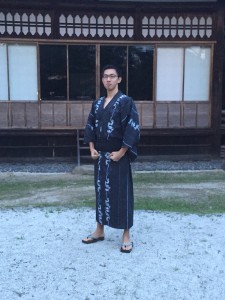
I had a great time at the Mid-Program Meeting in Kyoto, with all the delicious food, sightseeing and tours, and just taking a break from doing research.
I left early on Sunday morning, since it takes around 4.5 hours to get from Sendai to Kyoto by Shinkansen. After meeting up with everyone else and briefly catching up with each other, we took a bus to Kansai Seminar House, outside the city center, where we would be staying. Right after we arrived, we had a long debriefing session, where everyone shared some of their highlights as well as challenges in their personal, research, and cultural experiences over the past four weeks. I found the discussion very insightful and it was probably what had the greatest impact on me during the trip. For one, we hadn’t seen each other for about a month, and it was great to just be together again and hear about what everyone had been up to. We were able to share in some of our common experiences, as well as learn from what others have done. It was quite comforting to hear that others have faced the same challenges.
One thing that became evident was how varied our actual research experiences have been. There were some people staying until very late every night, some who have faced constant setbacks and delays, and others who’ve made steady progress and enjoyed every aspect. In a way, I suppose this should be expected, nevertheless, I was still quite shocked to hear some of the experiences others have had. For example, being delayed for reasons like “we should take longer because we don’t have anything else for you to do”. It really made me realize how different my experience has been doing theoretical research, and never having to wait for a machine to be available or a sample to arrive, so I’m really quite blessed in that respect. On the other hand, many people’s lab culture seems stronger than my lab, going out together after work, or visiting places. It made me want to be more proactive in getting to know my other lab mates.
The second day was a Monday, also the Fourth of July. We spent most of the day in Kyoto University (Kyo-dai). In the morning, we all gave our 5-minute research presentations. Apart from learning a bit about what everyone was doing, I think I also learned some valuable lessons about presenting effectively, from both what others did well and what should be avoided. This was followed by lunch and an informal discussion session with Kyo-dai students. I talked for a bit with the Tomodachi student who was at Rice this spring and is now a master’s student at Kyo-dai. We shared our opinions on how labs and research compare between Japan and the US, and agreed that it really depends on the professor more than anything. Afterwards, we were given a tour of several labs, doing research on cell repair, neuroscience, porous materials, and more. In the afternoon, we went to Ginkakuji, the (formerly) Silver Pavilion Temple. Finally, the day wrapped up with a classic Fourth of July barbeque, albeit with a Japanese twist. I enjoyed working the grill, ate until I couldn’t anymore, and finished with birthday cake for Brianna!
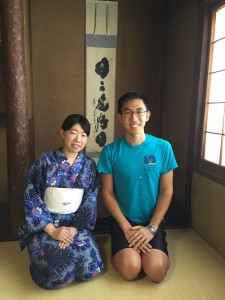
Tuesday was a day full of sightseeing. We started off with a visit to one of Kyoto’s oldest temples, Kamigamo motoyama, though you wouldn’t be able to tell because it’s renovated every 21 years. Here, we got to have the very exclusive experience of seeing the inner temple, thanks to our Nakatani Foundation Kyoto guide, Horikawa-san’s family’s connections to the temple lasting hundreds of years. Then, we got to experience sadō or Japanese tea ceremony. It was a very exact process, and every aspect of the ceremony has a reason and meaning behind it. This was followed by a visit to Kinkakuji, the Golden Pavilion Temple, which unlike its silver counterpart, is still covered with gold leaf. Finally, we made one last stop at the Gallery of Kyoto Traditional Arts & Crafts. I found the pieces quite captivating, especially an architecture exhibition from students, and spent the whole time with Ben and Endo-san taking in all the details, while others went to the nearby Kyoto International Manga Museum. The busy day ended with everyone putting on fancy yukatas, including Sarah-san and Kono-sensei, and lighting fireworks and sparklers.
Wednesday was our last day, and we went to Kobe, about 2 hours from Kyoto, to visit Sysmex Corporation’s main research facility, Techno Park. Sysmex makes medical diagnostic equipment, like cell counters and reagents, and has become one of the biggest companies in Japan, with a global market. Its founder, Taro Nakatani, also founded the Nakatani Foundation, hence our connection. After being honored with an introductory address from the current CEO of Sysmex as well as Executive Director of the Nakatani Foundation, we were treated to an amazing lunch of Kobe beef sandwiches and our choice of anything we wanted from the cafeteria! A guide then gave us a tour of the facility, with innovative features like desks facing each other to encourage collaboration and a very open architecture. The best part had to be the park surrounding the buildings that gives the facility its namesake. The Japanese garden around the teahouse was truly one of the most spectacular I’d seen, complemented by the sunny weather and perfectly blue sky. The park also featured meditation spaces and kinetic sculptures by local artists. But alas, good things can’t last, nor can the mid-program meeting, and soon enough it was time for goodbyes and to go back to our host lab cities.
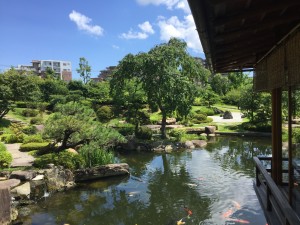
There were numerous challenges on the trip, for example, the “terrible hot” weather, and having way too much meat for the BBQ that we couldn’t finish. Kidding aside, the biggest challenge I personally faced would probably have to be the presentation. Even though it was only 8 minutes of the trip, including questions, I had many difficulties before I even started making the slides (see research update below), and struggled to keep time as well as communicate what I’m doing effectively. For one, I tend to go into too much detail, which was already mitigated by completely redesigning my slides per Saito-sensei’s advice. I think being aware of this, and adjusting the level of technical detail depending on my audience, will help me not just for the rest of the summer in Japan, for example in my daily meetings with Saito-sensei or the Zao meeting, but in my academic and professional career in general. It doesn’t matter how amazing of a result you get, it’s worthless if no one else can understand you. I also didn’t have time to practice talking, which is very important especially for timing.
Question of the Week
One question I’ve wondered for some time is regarding Japanese names. I’ve noticed that amongst Japanese names, both family and given names, some, like Saito, Endo, or Junichiro, use the on-yomi (Chinese reading), while others, like Shirakura, Yamada, or Ogawa, use the kun-yomi (Japanese reading). The same is true of place names: Tokyo, Sendai, Kyushu use on, while Matsushima, Akita, Nagasaki use kun. As far as I can tell, it’s split fairly evenly and randomly, with no geographical or other pattern. My question is, with the place and family names, is there some difference in their history, such as how old the names are? With given names, do parents intentionally choose one or the other?
- This is a very interesting question and one that other Japanese language learner’s who can read kanji have expressed too. Here’s a historical overview of names in Japan, but this might be an excellent question to discuss with the AJALT language teachers or perhaps with your professor to see what other insights they can provide too.
Research Project Update
I encountered my first major setback in research on Tuesday the week leading up to the mid-program meeting, when my computer crashed and wouldn’t turn on. Much of my time in lab the rest of the week was spent trying to fix my Mac. Without going into too many details, the hard drive had failed, and installing a new one that Saito-sensei gave me only fixed the problem temporarily, as it turns out the hard drive cable itself might be broken. As a result, I wasn’t able to start working on my presentation until Friday, nor access my Matlab programs to calculate transfer matrices, which somewhat impacted my progress.
In between fixing my computer however, I did still manage to continue some work on my research, thanks to its theoretical nature, using good old pencil and paper. One good result that took a couple days’ effort was proving the cyclic permutation symmetry. Along the way, I also proved several useful smaller lemmas, for example, the internal layers “cancelling” in a product of “chain” matching matrices. Then, most excitingly, I found the last two hidden symmetries that can explain how to get between any two sequences with the same T. These are the arbitrary permutation of double layers, and the inversion of pairs of layers that are the same. Moreover, I can now explain the N/2 + 1 pattern for number of T values for a given even N number of layers, using a generalized concept of “pairs”, of which there can be 0, 1, … , N/2 for N layers.
My plan for the following week is to prove the total inverse, double permutation, and pair inversion symmetries. I believe the latter two will most likely involve the fact that P2 = -Id, where P is a propagation matrix. Now that I have found all the symmetries necessary to explain the degenerate patterns at any T value, the plan is to apply group theory to these symmetry operations, specifically representation theory and constructing character tables. But first, I must check if these operations form a group. To do that, I must find the products of the operations, adding elements to make the group closed, and making sure the final product table is valid and doesn’t violate any group axioms. Finally, I will try to find the mathematical pattern in the number of sequences (i.e. degeneracy) at each T value.
Week 08: Research in Japan vs. Research in the U.S.
No report submitted.
Return to Top
Week 09: Reflections on Japanese Language Learning
No report submitted.
Week 10: Interview with Japanese Researcher
I decided to interview Dr. Teng Yang, a visiting researcher at Saito-sensei’s lab from from Shenyang, China. He will be staying in Japan for six months, and is here with his wife, almost 2-year-old son, and parents-in-law, all of whom are only staying for one month. He and his wife have both worked in Saito-sensei’s lab previously.
Dr. Yang’s path to a career in physics started in high school, when he represented his school in the National Science Olympiad and won a second place prize. It gave him confidence as well as guidance on what to study in university. He received both his bachelor’s and master’s degrees in condensed matter physics from Nanjing University. As a master’s student, he was an experimentalist, working on high TC superconductors. In 2002, he moved to Michigan, to pursue a PhD at Michigan State University. During the first two years or so there, he was unsure of a research direction, and explored many paths, trying experimental first – STM and neutron diffraction – but was not too interested. He then switched completely 180 to pure theory, which he liked, but found he did not have a strong enough math background. Finally, he settled on computational physics, joining David Tomanek’s group in 2005, partly because of how enthusiastic and passionate Tomanek was. Tomanek is a pioneer of simulating carbon nanotubes, which were a very hot topic at the time. Dr. Yang’s PhD thesis however was on MoSI nanowires, which has advantages over CNTs in certain aspects, studying its electronic properties. He received his PhD in 2009, again in condensed matter physics.
Having been a student in both China and the US, the two experiences of university life are very different in Dr. Yang’s opinion. In China, everyone just keeps studying, and there is no spare time, no time to exercise. Though this does have some advantages, like being academically ahead of their peers abroad, and getting a really solid background, he believes overall this is bad, and there needs to be balance. In the US, it is much better, you are not expected to constantly study, so there is a lot more free time to do sports and other activities, and meet people. He challenged himself to get involved at MSU, serving as president of the Chinese Students and Scholars Association, in which capacity he had to talk to people for example to get funding for events, and also allowed him to understand how the university functions.
After getting his PhD, Dr. Yang started his career as an associate professor in the Institute of Metal Research, part of the Chinese Academy of Sciences, where he is still working. He admits that not having a post-doc experience, he was kind of lost at first. But like with his PhD, he changed directions, started in the magnetic division, and decided to work on 2D materials. The work was published, and got good citations. Going forward with his career, Dr. Yang wants to continue doing theoretical and computational research in this field, but also going to other countries and labs as a visiting scholar. He feels he can really go anywhere he’d like, since he gets funding from the Chinese government. He chose Saito-sensei’s lab this time for several reasons. Firstly, he was here before for almost one year with his wife, who was doing a post-doc. His interests in 2D materials are closely aligned with the work here. Finally, he says Saito-sensei is very kind and generous. Dr. Yang feels he is quite different from a typical Japanese person, and is like an American professor in some respects, such as personality and open-mindedness.
Dr. Yang works at the Shenyang National Laboratory for Materials Science under the IMR, which was founded in 1953. He is in the magnetic materials department, one of the dozen or so in total, that include advanced coupled materials, alloys, and electron microscopy, amongst others. The various departments, and labs of the IMR itself, go in different directions and are very independent and separate. Additionally, the lab is split into two parts, one for basic fundamental research, and the other, supported by the military, for pure engineering, such as materials for satellites and engines. Because of the classified nature of that research, the two are completely insulated. He says that in general, researchers in Chinese institutions do not collaborate with each other, as there is a culture of not wanting to share results because then it feels like someone else is publishing their results. For example, he does purely computational simulations, with no collaboration with experimentalists. This is a big barrier to progress he believes. In Japan and the US, there is much more collaboration. At Saito-sensei’s lab for example, there is a lot of collaboration with experimentalists, though he does suggest that Saito-sensei’s renown probably attracts collaborators. He feels there is not much difference between labs here, especially Saito-sensei’s, and the US, relative to those in China. That being said, he has only worked with Saito-sensei, who is almost like an American professor in his opinion, so can’t comment on Japanese labs in general.
Apart from longer stays in the US and Japan doing research, Dr. Yang has also had many other short term international experiences. He has worked in Germany and at the International Centre for Theoretical Physics in Trieste, Italy, both for several weeks. He has attended conferences in Slovenia, Brazil, Canada, Japan, and Hong Kong. There are some international researchers at his lab too, but most are only there for short visits, like a week or two, supported by funding from the institute. The institute invites professors from abroad, like Germany and the US, and cover all their expenses, even paying them a salary. However, there have been instances of culture shock, and cultural differences leading to unfortunate situations with some foreign visitors. While most visitors are short-term, they do also have a few long-term, usually with national support and funding. They stay for half a year or longer, working a collaborative project. One example is China’s 1000 Person Talent initiative, that anyone can apply for regardless of nationality, to come work in China for one year. The IMR has some international students too, mostly from Pakistan, India, and Africa, with a few from Europe and the US usually for doing a master’s. Dr. Yang believes this internationalization is very important, even essential for research. You cannot do scientific research domestically; there must be the exchange of ideas and results, which is why he attends international conferences, to meet other researchers in the field. He says that amongst his colleagues, he is the most active in this sort of international engagement. He does face certain limitations though. For example, as a visiting scholar, he can stay for longer if he has funding, like this time, but if not, he would have to self-support and only have very short stays. In addition, there are rules set by the Chinese Academy of Sciences on number of times and length of visits. Although, because many of his colleagues never go out, he can “borrow” from them. There are many programs to encourage international collaboration in China, like scholarships for Chinese students, and fellowships to join conferences.
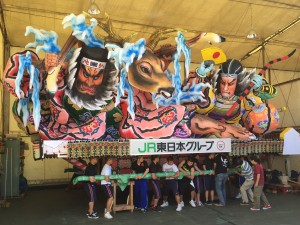
Question of the Week
A question occurred to me during all my travels recently, especially to farther places like Aomori. How different are regional dialects of Japanese? Are the differences phonetic, or semantic? Is there a danger of dialects going extinct, due to everyone learning and speaking standard Japanese at school, like what is happening in China?
- The two main dialects in Japan are Standard Japanese (spoken in the Tokyo area) and Kansai dialect (spoken in the Kyoto-Osaka area). There are some other regional dialects as well though it may be difficult for a non-native Japanese speaker to pick up the subtle differences in words and phrases during a short trip to the region. Standard Japanese is spoken by everyone since that is what is taught in schools and used on the national school exams. For more on dialects in Japan see the following sites.
Research Project Update
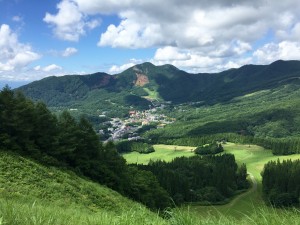
Once again, there isn’t too much to update on research, because Monday was a national holiday (Umi no hi, Sea Day), and Tuesday and Wednesday, I was at Mt. Zao attending the Nano Carbon meeting with most of my lab.
The Zao meeting was and has for many years been organized by several professors, including Saito-sensei. It is a smaller gathering of around 30 or so researchers and students in this field from Tohoku and various universities in Tokyo, much more informal than a conference. During the two days, I heard many talks on a wide range of topics related to nanomaterials, at the very cutting-edge of research. Of course, I wasn’t always able to follow everything, but I think the most important thing I got out of it was just being exposed to some of these ideas, techniques, and theories I’d never heard of. I also gave a six-minute talk on my research, followed by two minutes for questions. I think I definitely improved on my presentation since Kyoto, especially the timing. I got some good questions, and talked in depth for quite a while afterwards with one researcher from the University of Tokyo who was particularly interested in my findings. Overall the meeting went very well and I enjoyed the experience.
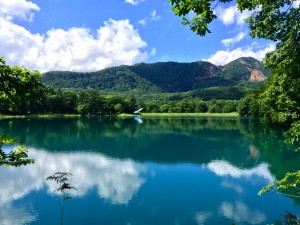
After finally getting back to lab after seven days straight of travelling, the most important thing was writing the draft of the poster abstract for the SCI colloquium. While working on writing it, I discussed extensively with both Shoufie-san and Saito-sensei. The most challenging thing was trying to decide who my audience was, which dictates the level of technicality and how much detail I should go into. After many revisions, we came up with a draft that everyone was satisfied with, that I sent to Dr. Stanton for approval.
Apart from writing the abstract, I also learned the basics of LaTeX, as that is what I’ll be writing the paper in, especially since there will be so much math. I starting writing up the proof for mirror symmetry from many weeks ago, and was delighted by how easy it was to typeset math beautifully in LaTeX. We also started thinking way ahead and talked about which journal we should submit to, and Optics Express, Optics Letters, and the wildcard Physical Review X were suggested. I also started discussing and designing the poster with Shoufie-san.
Week 11: Critical Incident Analysis – In the Lab
No report submitted.
Return to Top
Week 12: Final Week at Research Lab
No report submitted.
Return to Top
Week 13: Final Report
No report submitted.
Return to Top
